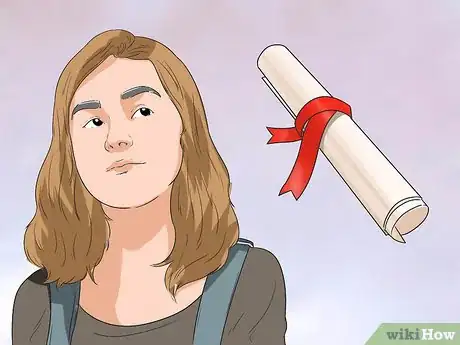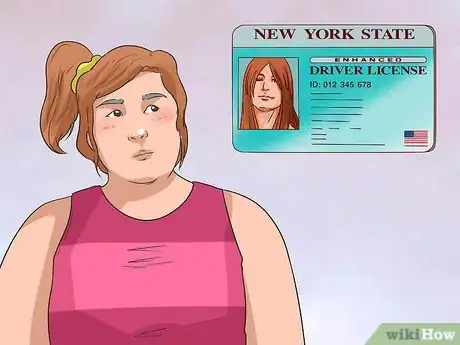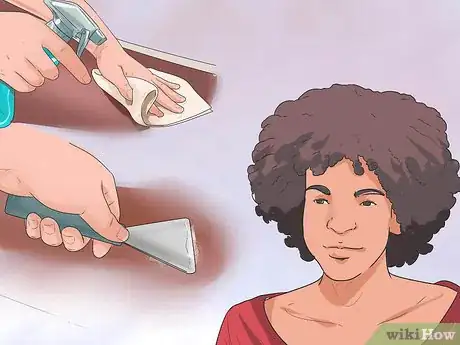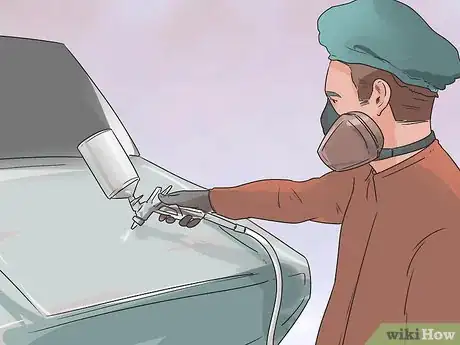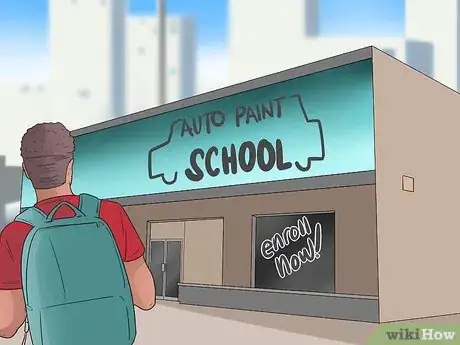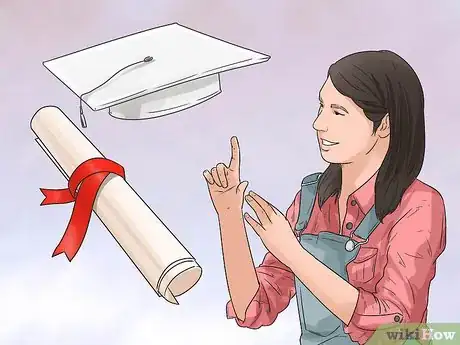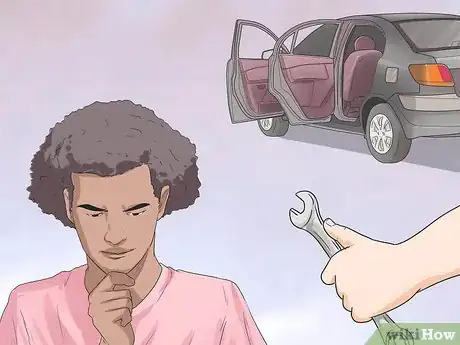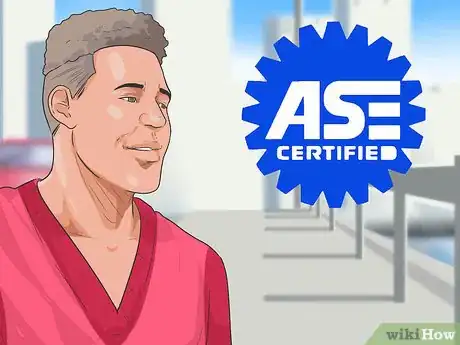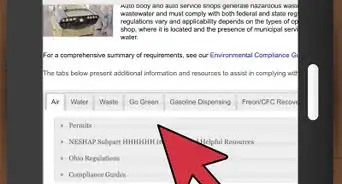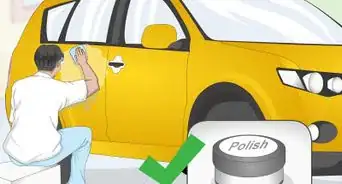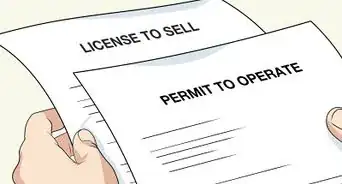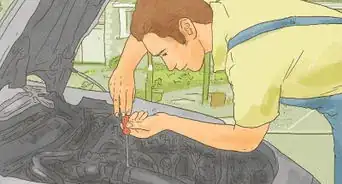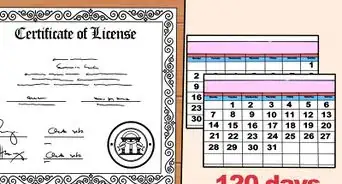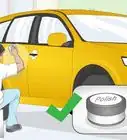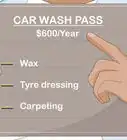This article was co-authored by wikiHow Staff. Our trained team of editors and researchers validate articles for accuracy and comprehensiveness. wikiHow's Content Management Team carefully monitors the work from our editorial staff to ensure that each article is backed by trusted research and meets our high quality standards.
This article has been viewed 188,544 times.
Learn more...
Auto body painters, sometimes called transportation equipment painters, are responsible for painting vehicles like cars, buses, and trucks. This might involve painting intricate designs or simply reapplying paint to cover up scratches and other damage.[1] To become an auto body painter, you'll need to meet the basic requirements before you are employed.
Steps
Meeting Basic Requirements
-
1Complete your high school diploma or GED. Before you can begin your career as an auto body painter, most employers will require you to have graduated from high school or received your GED. If you have not yet done so, you might consider taking classes at a community center or community college to achieve this requirement.[2]
- You may be able to improve your chances of getting work as an auto body painter or make your transition into this role smoother by taking a high school shop or automotive class, if one is available to you.
- Some high schools allow dual enrollment, which means you can take a class not offered at your school somewhere else. You'll have to inquire with a teacher or school counselor first, but you might be able to take a shop class at a community college your junior or senior year.
-
2Get a license and maintain a clean driving record. Auto body painters, in many situations, will be required to move the vehicles of customers. To do so legally, you'll need a license. Since you'll also be responsible for the care of expensive vehicles, many employers also desire a clean driving record as proof of your responsibility.[3]Advertisement
-
3Familiarize yourself with manual transmissions. Over the course of your career as an auto body painter, at some point you'll likely have to work on a manual transmission vehicle, also called a stick shift. Because of this, many employers require auto body painters to be able to drive both manual and automatic transmission cars.[4]
- You might be able to get a lesson in driving a stick shift from a family member or friend. Be patient when doing so. It may take you some time to get the hang of driving a manual.
-
4Acquaint yourself with auto body painting responsibilities. There are many other tasks you'll be expected to handle to prepare vehicles for painting. This could involve removing rust, dirt or debris from the surface you will be painting, filling in cavities or dents to create a smooth, even surface, and taping off boundaries for detail work.
- You'll also need to be able to select the correct kinds of paint and equipment you'll need to use for a particular project. This information is often taught in courses on auto body repair/painting, or through on-the-job training.[5]
-
5Find a job related to auto body work. This is a good way of getting a peek at the basics before trying to get a job as an auto body painter. Be attentive while you're on the job, and ask coworkers you are comfortable with questions about how the process works and the techniques that are used.
- Many companies promote from within. If you start working the front desk of an auto paint shop and express interest in becoming a painter, you may be able to get trained in the position and transfer from your desk position.
- You may be able to start off work with an auto body shop as an apprentice auto body painter. This will give you valuable, on-the-job training that you can mention in your resume and at interviews.[6]
Getting a Job as an Auto Body Painter
-
1Write your resume. In your resume, you'll want to highlight any experience you might have that's related to automotive work. This might involve working in a body shop, tinkering with classic cars as a hobby, or even artistic experience, like a degree in art or painting.
- You may want to bring finished pictures of automotive work you've done in the past to any interviews you have to supplement your resume.
-
2Network with people involved in the auto industry. If you're into the automotive scene, it's likely you know other people who share your interest. These people may be able to tip you off about a job opening or refer you to an auto shop they work at or take their vehicles to.[7]
- Be clear and direct with your automotive friends when telling them you're looking for a job as an auto body painter.
- You might connect with people involved in the automotive industry through networking sites like Facebook and LinkedIn.
-
3Apply with local auto body paint shops. You might wait until there is a posting online or in the newspaper for an open position as auto body painter, but this can result in wasted time. There's nothing wrong with putting in an application even if there are no openings.
- Many companies keep resumes on file in case a position opens in the future. You may not be called back immediately for an interview, but that could happen eventually if your resume is on file.[8]
-
4Follow up with potential employers. There may be many people applying for the same position you are. To set yourself apart from others and to express serious interest in the job, you should follow up your interview with a call politely inquiring about the status of your application.[9]
Improving Your Odds of Getting the Job
-
1Practice in your free time, if possible. The professional equipment for auto body painting can be expensive, so you may not be able to afford the tools to do this on your own. If you do, however, you can get off-the-job experience painting or touching up the cars of friends and relatives.
- You may be able to save up money to invest in auto body painting equipment of your own. Once you are experienced, you might even do your own auto body painting on the side for supplemental income.
-
2Get certified or take a course in auto body painting. Many trade schools and community colleges offer courses in auto body and paint technology. By completing a course or certification program, you'll become more desirable to potential employers.[10]
- Many community colleges and trade schools have open admissions policies, so there's little risk you'll be turned down unless the program is already at capacity.
-
3Complete an associate's degree. If you have little or no experience in the auto body field, receiving an associate's degree can improve your chances of being accepted as an apprentice or auto body painter's helper. Employers often look at further education as a sign that potential employees have the skills necessary to learn the trade.[11]
- An associate's degree in an automotive related field, like auto body collision repair, will be looked at more favorable than other degrees, but even one in an unrelated field will show you have the perseverance to learn new things.
-
4Gain experience with the tools of the trade. Hands-on experience with automotive related hand tools and other aspects of automotive work will also improve your chances of being chosen for a position as an auto body worker. This information can be added to your resume or included in your cover letter.
-
5Become ASE certified. The Institute for Automotive Service Excellence (ASE) offers a certificate program for automotive painters. You'll have to get some auto body painting experience,as the certification requires you to have at least 2 years of automotive painting experience or at least 1 year of training that meets ASE standards.
- Obtaining the voluntary certification means passing a written examination. You must retake the examination approximately every 5 years to keep the certification.[12]
Community Q&A
-
QuestionI just want to paint my own car. How can I do that?
 Community AnswerYouTube and Google some tutorials. Wake up early. Make a list of supplies and equipment needed. Wear some old clothes and have at it.
Community AnswerYouTube and Google some tutorials. Wake up early. Make a list of supplies and equipment needed. Wear some old clothes and have at it. -
QuestionWhich college must one go to study to be an auto body painter?
 Community AnswerSome universities may offer classes on auto body painting, but it's more likely that you'll find a trade school that offers a course in this. Check with local automotive trade schools around you to find out if this option is available.
Community AnswerSome universities may offer classes on auto body painting, but it's more likely that you'll find a trade school that offers a course in this. Check with local automotive trade schools around you to find out if this option is available.
Warnings
- It might take you some time before you become an auto body painter. Be patient with yourself while trying to achieve this goal.⧼thumbs_response⧽
References
- ↑ http://www.penncotech.edu/programs/automotive-body-paint-technician/
- ↑ http://study.com/articles/Auto_Body_Painter_Job_Description_Duties_and_Requirements.html
- ↑ http://study.com/articles/Auto_Body_Painter_Job_Description_Duties_and_Requirements.html
- ↑ http://study.com/articles/Auto_Body_Painter_Job_Description_Duties_and_Requirements.html
- ↑ http://study.com/articles/Auto_Body_Painter_Job_Description_Duties_and_Requirements.html
- ↑ http://www.bls.gov/ooh/production/painting-and-coating-workers.htm
- ↑ http://www.helpguide.org/articles/work-career/job-networking-tips.htm
- ↑ http://study.com/articles/Auto_Body_Painter_Job_Description_Duties_and_Requirements.html
- ↑ http://www.monster.com/career-advice/article/a-follow-up-call-wins-the-interview
About This Article
If you’re dreaming of being an auto body painter, you can get started by gaining some painting experience and reaching out to local companies. Take a course in auto body painting if a local college offers it. Or, try to get an apprenticeship as an auto body painter, which will teach you the basics and may lead to a full-time job later. Don’t just search online for opportunities. Drop by local auto body shops, introduce yourself, and ask if they need any help. That way, you'll get to talk to them face to face and make a good impression. Leave them with your resume, highlighting any painting experience you have. You should also get your driver’s license, since many auto body painting jobs will require you to move the cars yourself. For more tips, including how to get certified with Automotive Service Excellence, read on!
